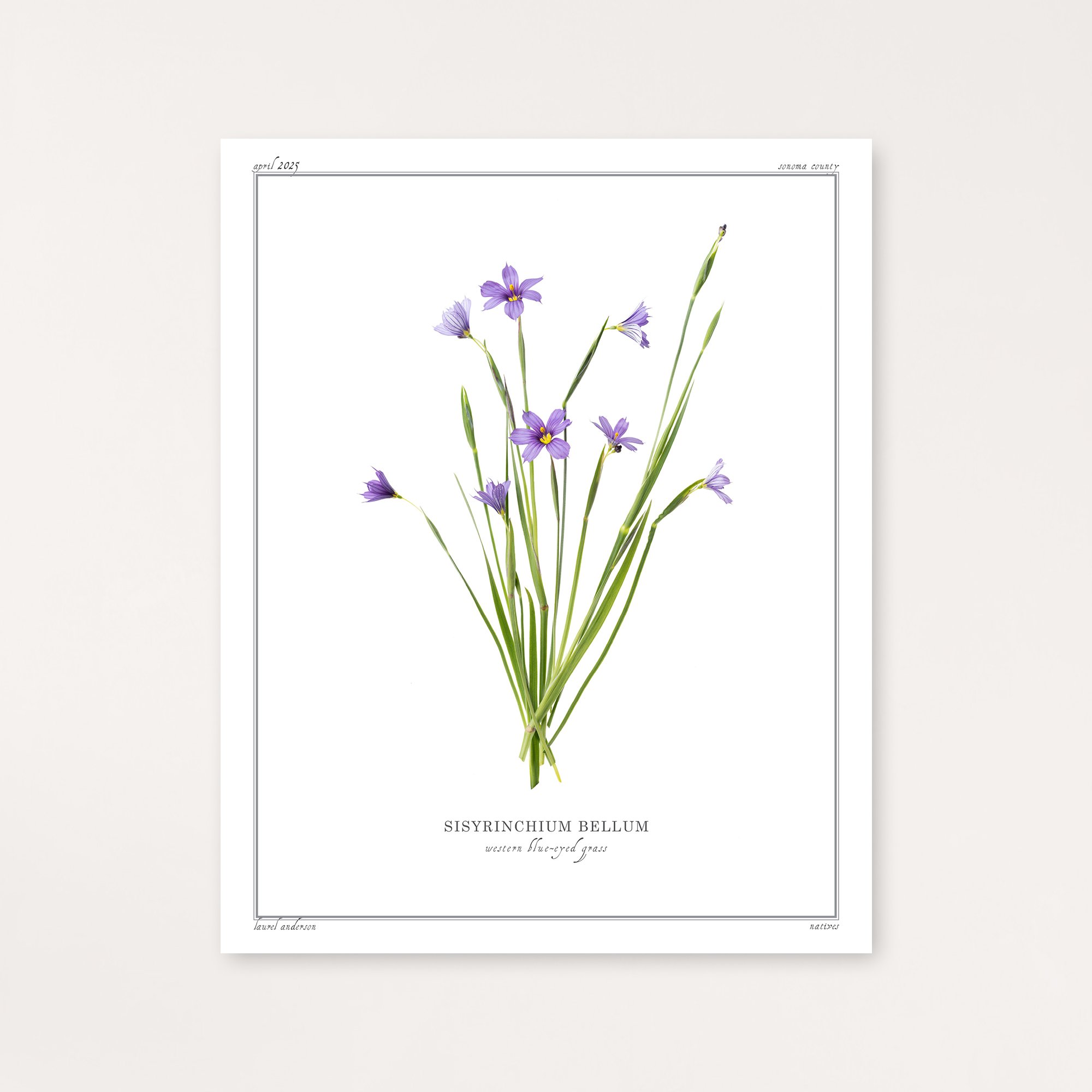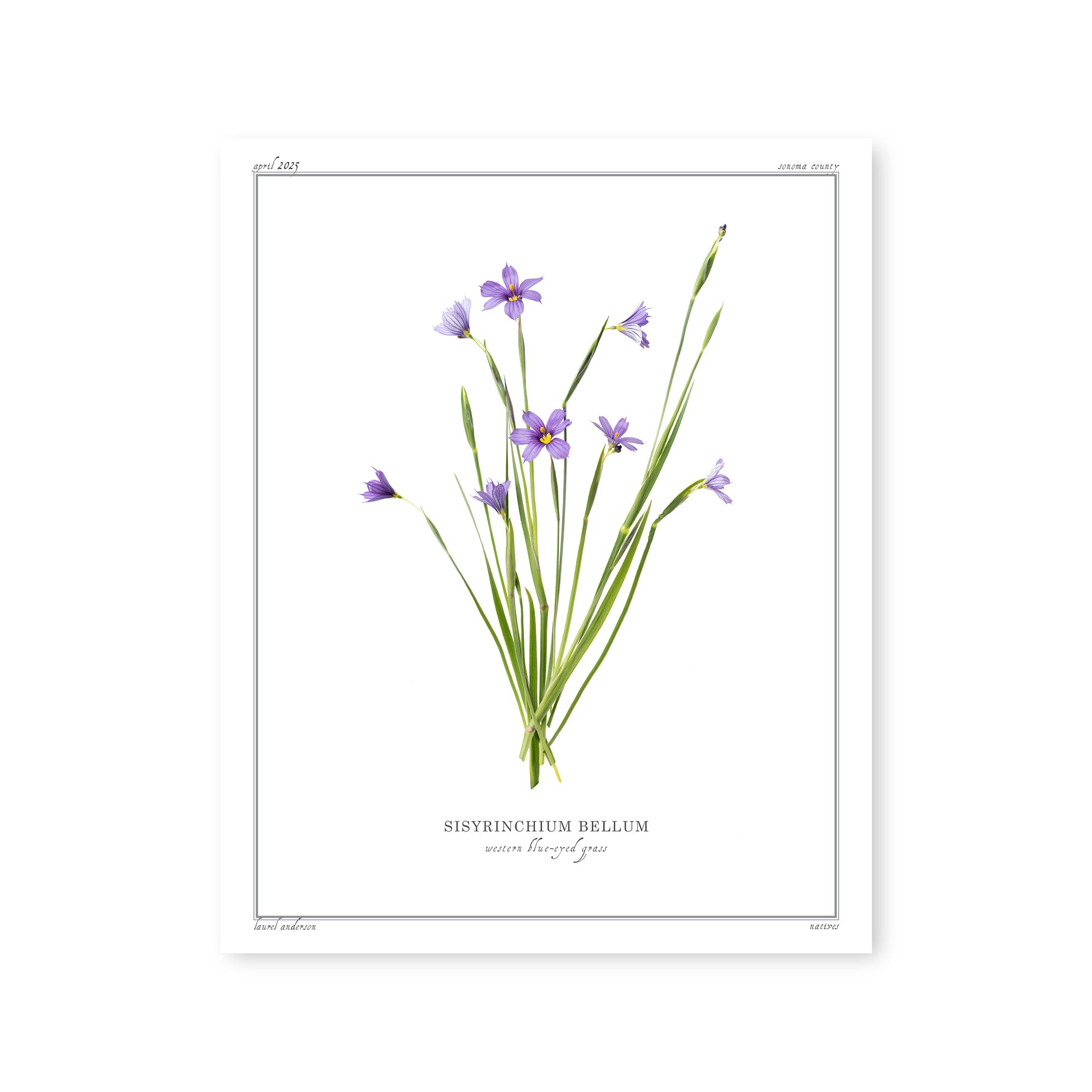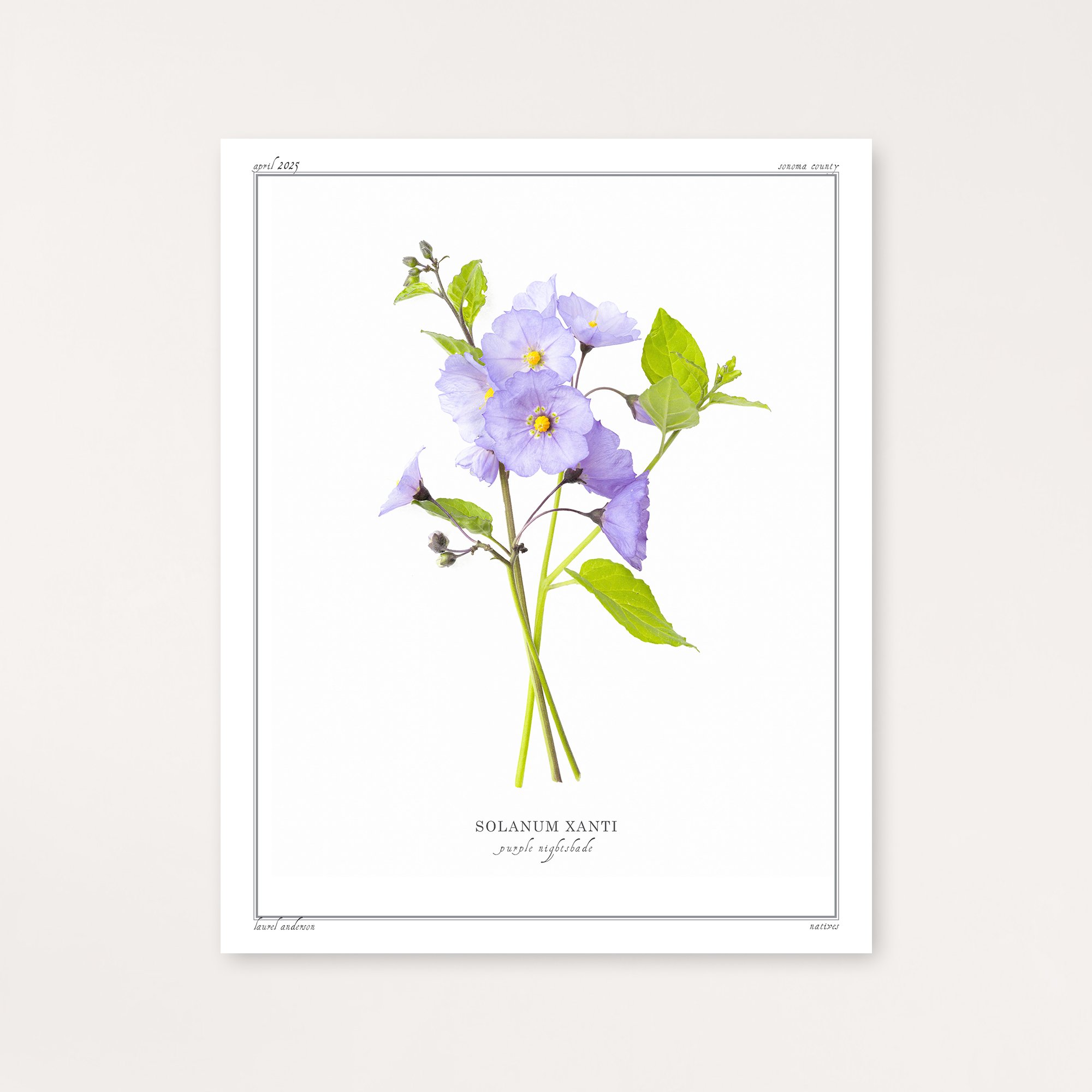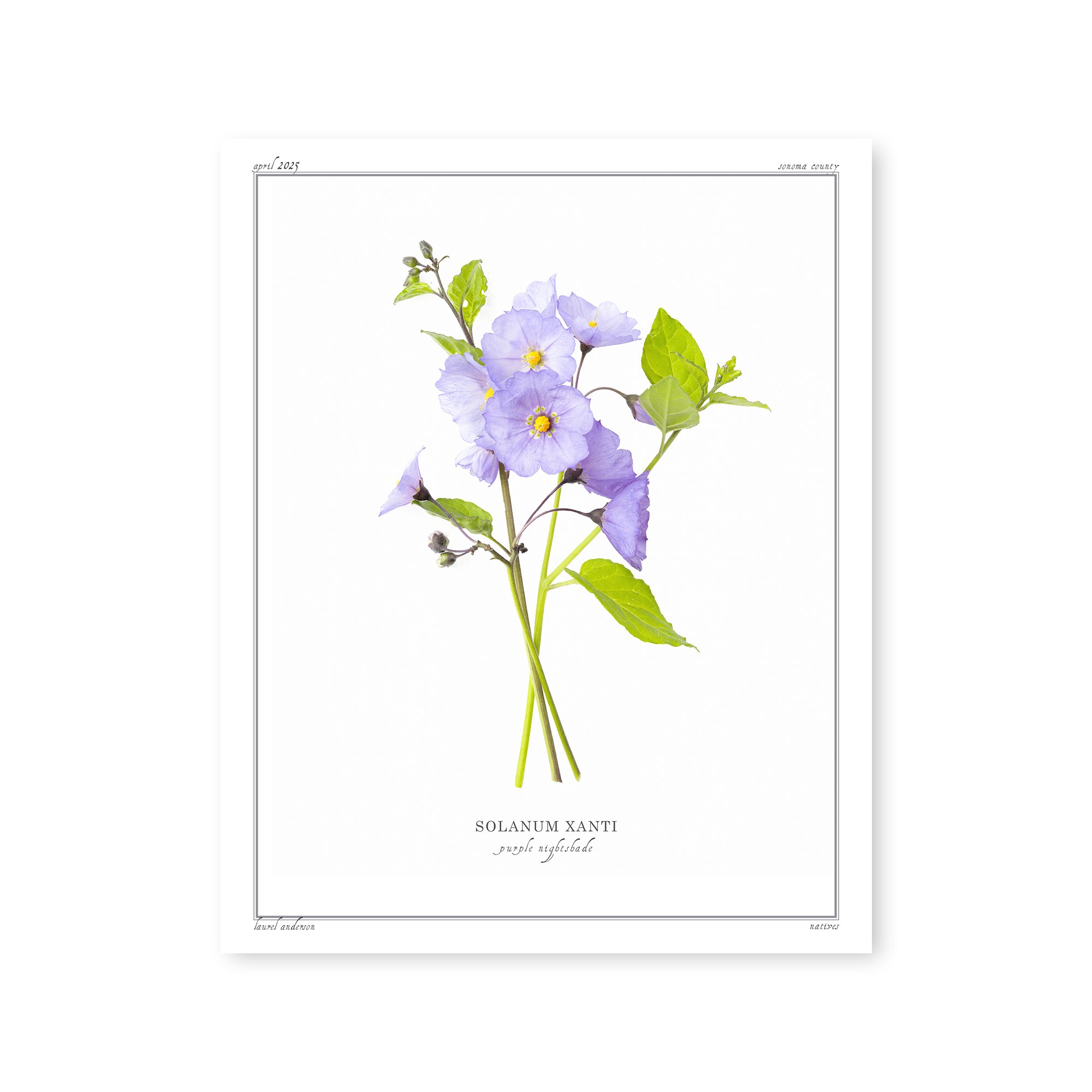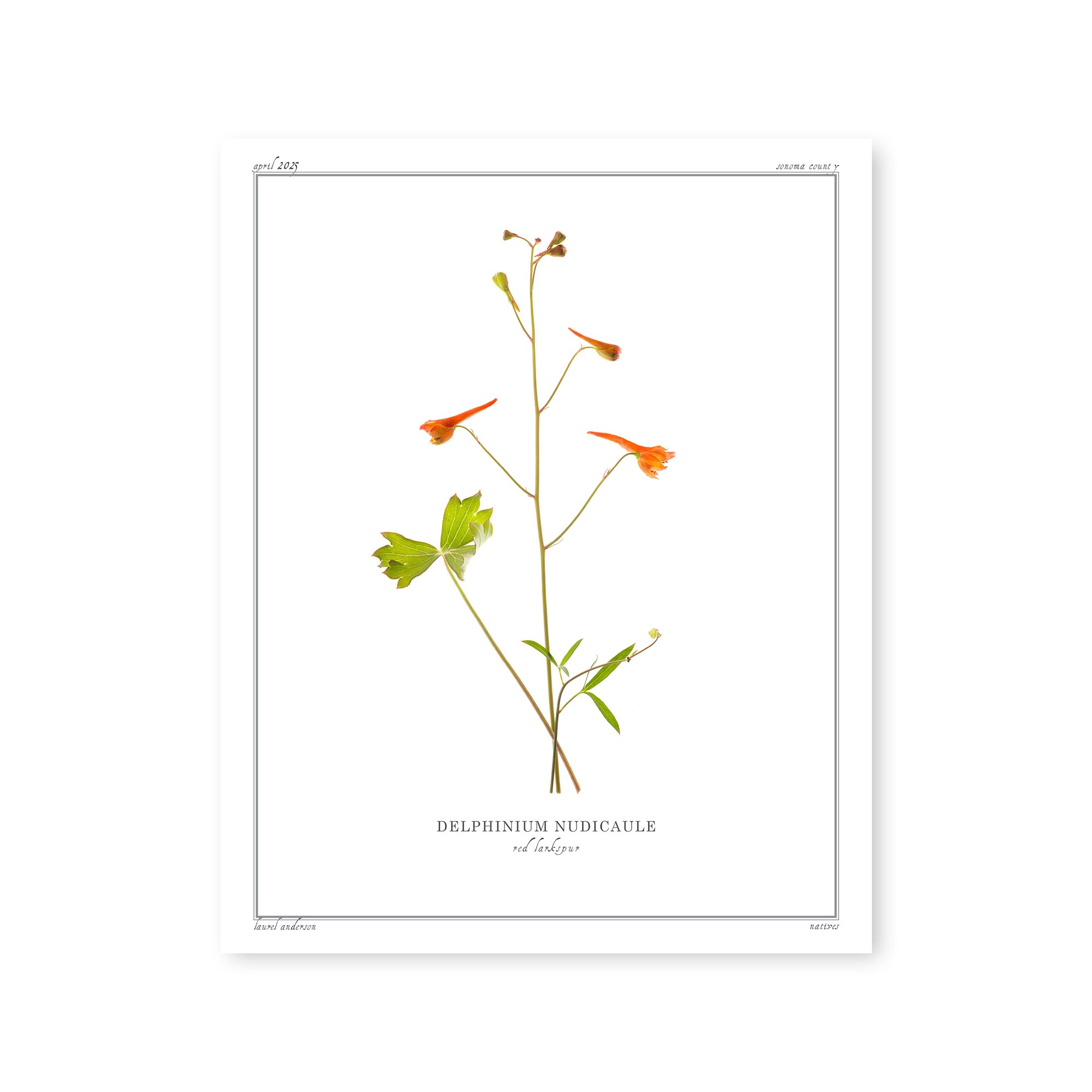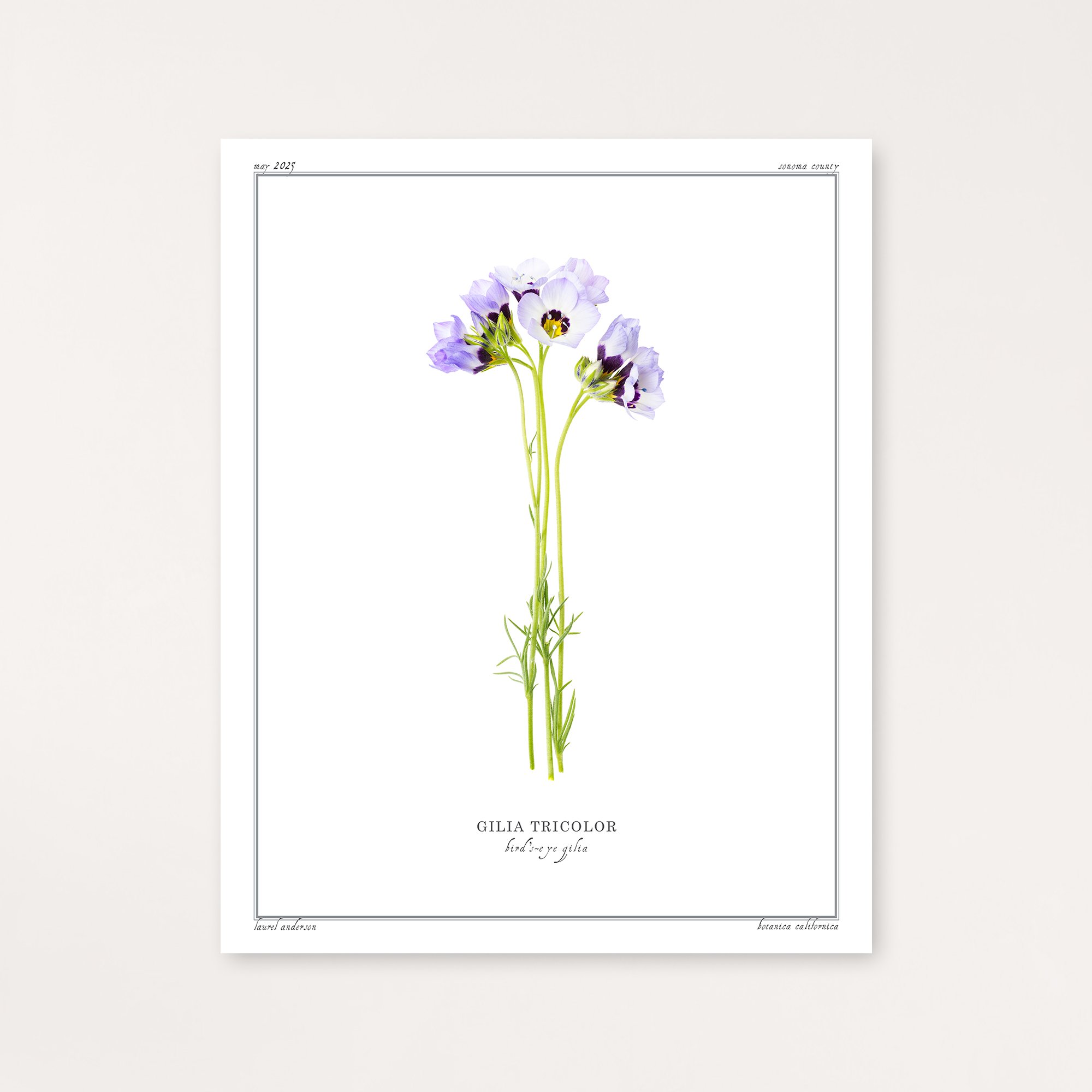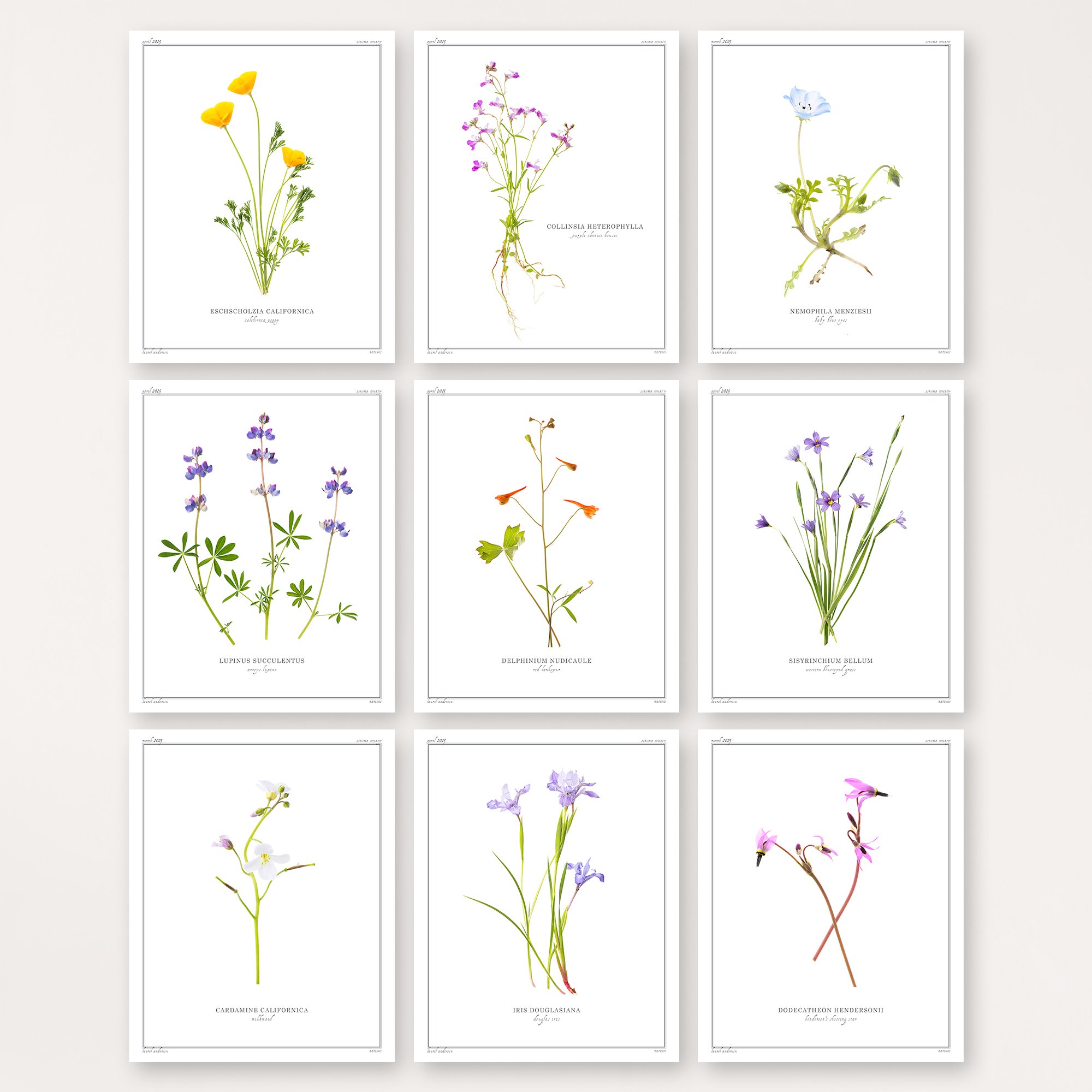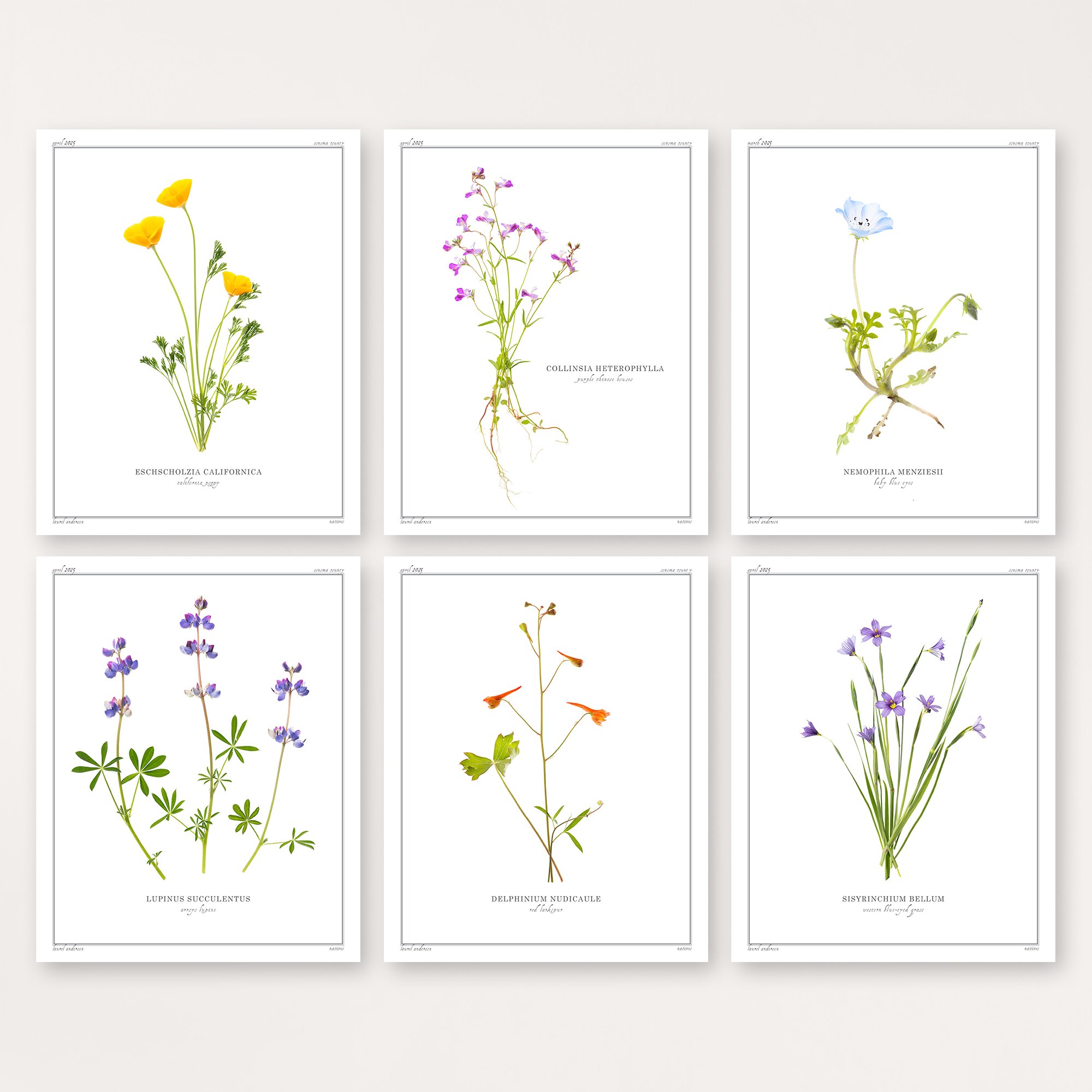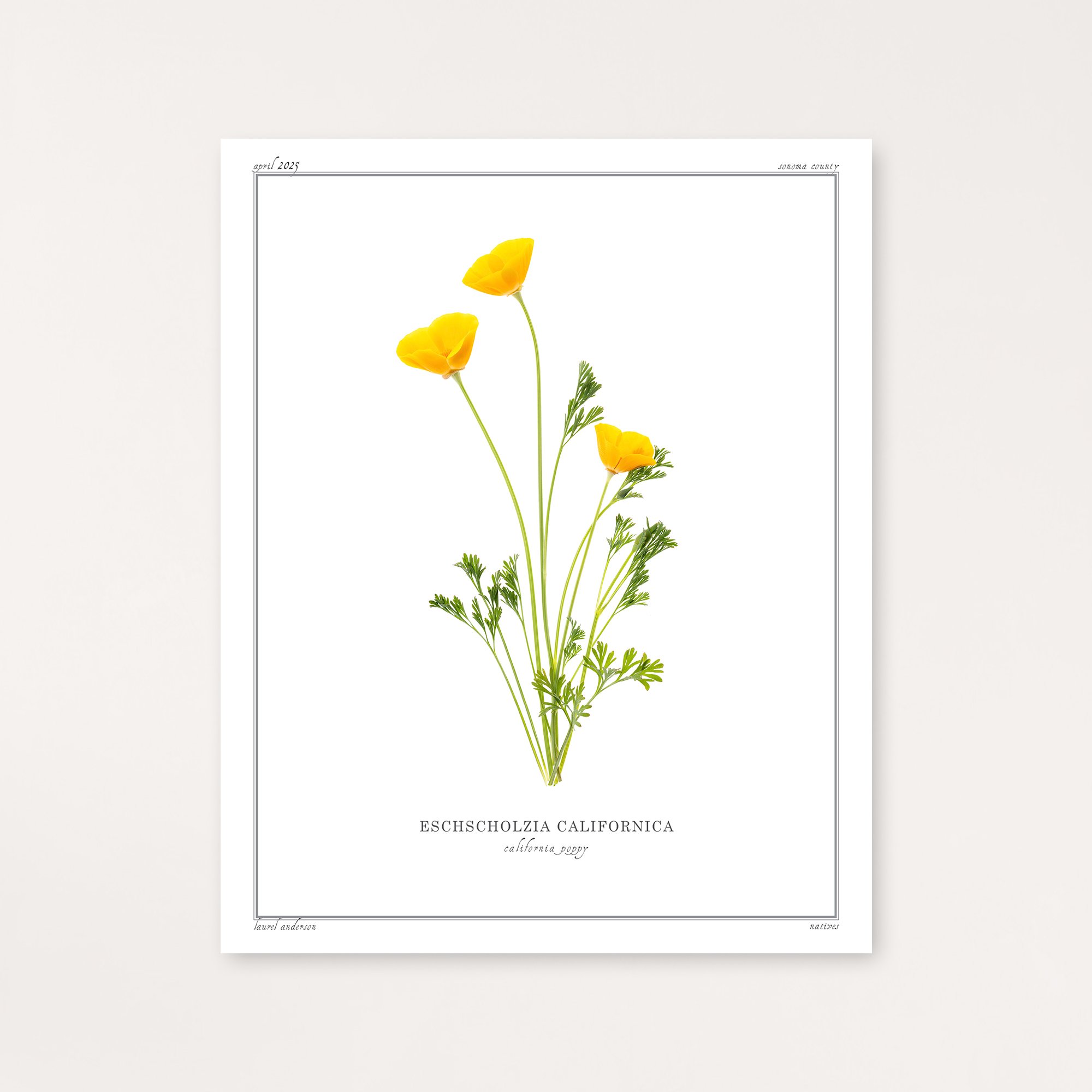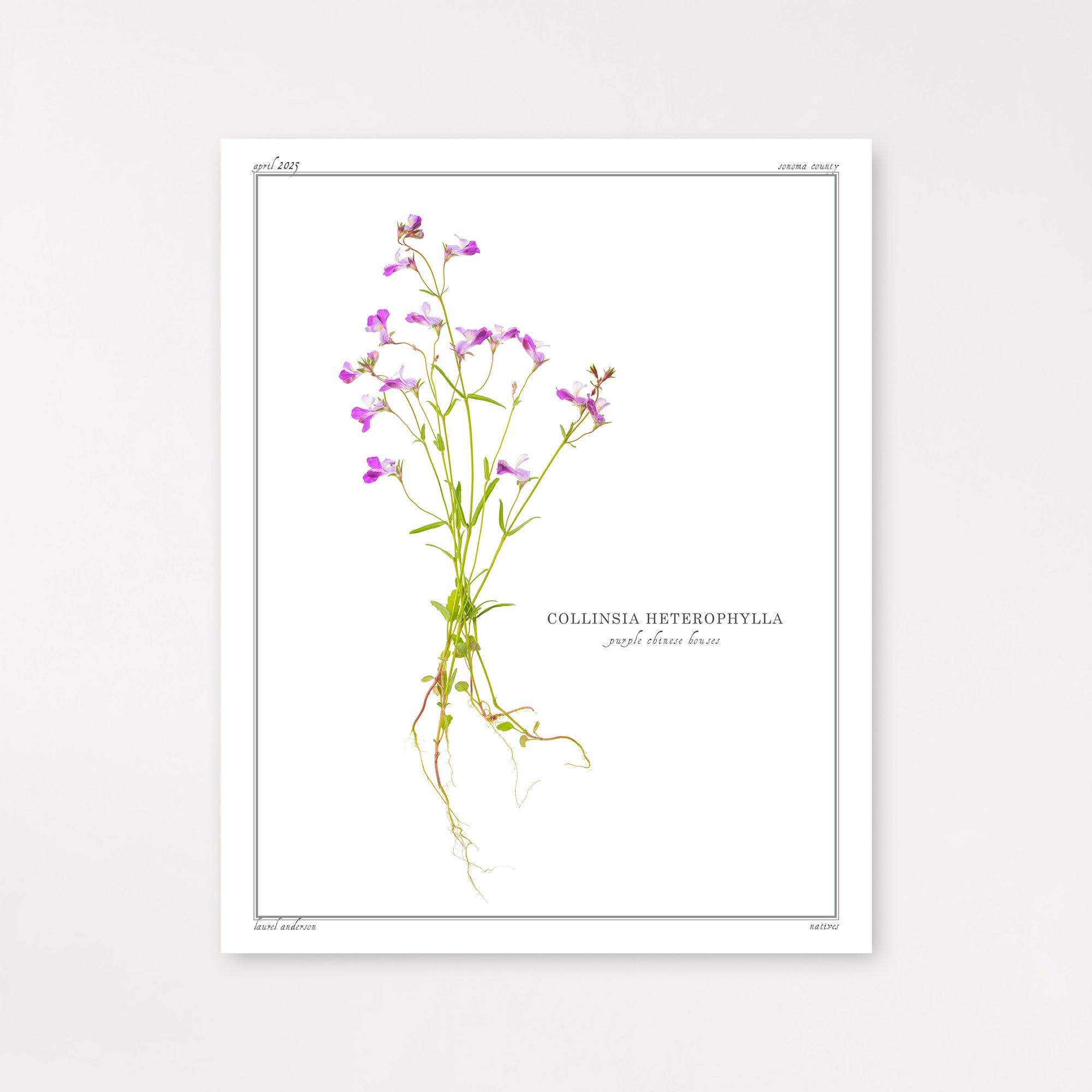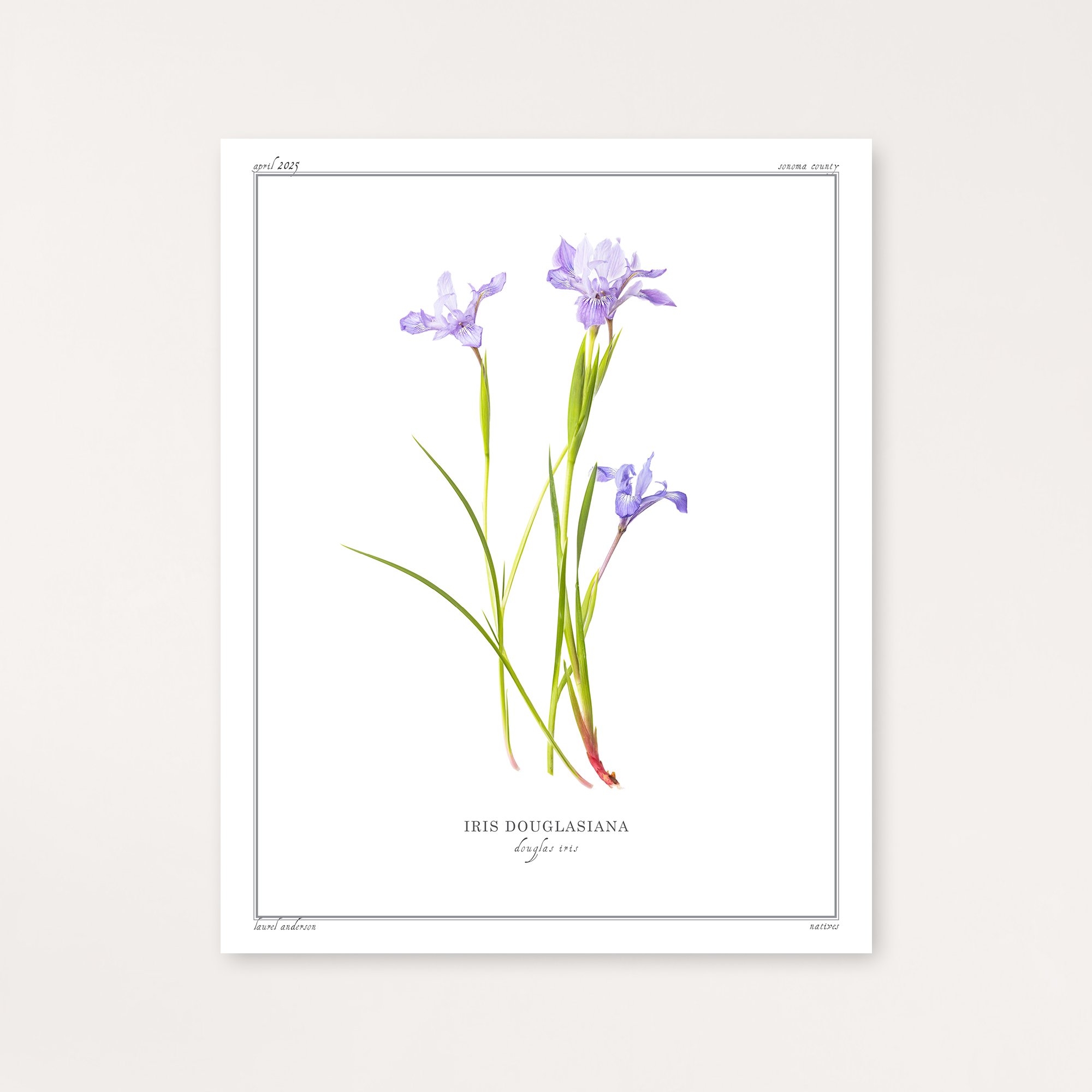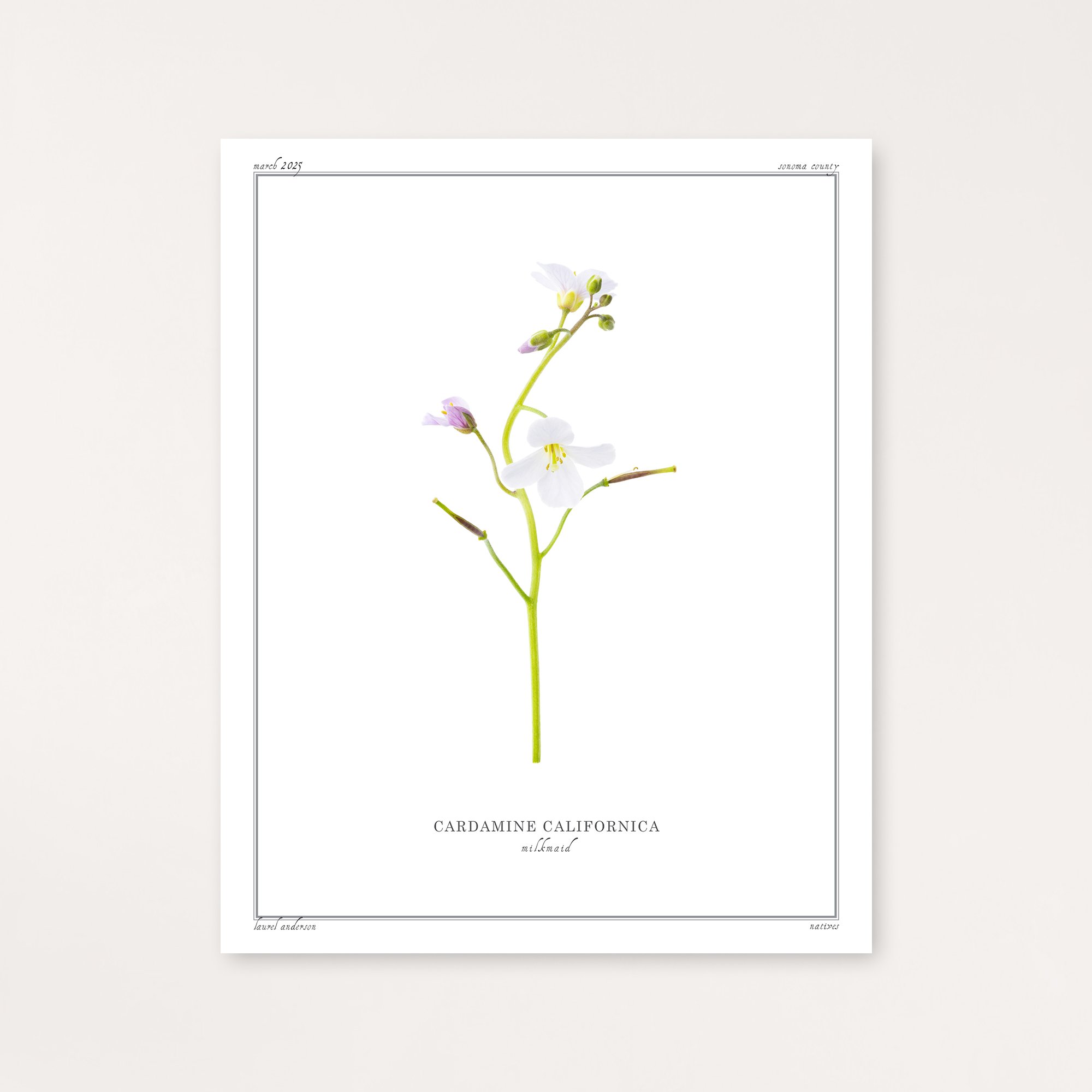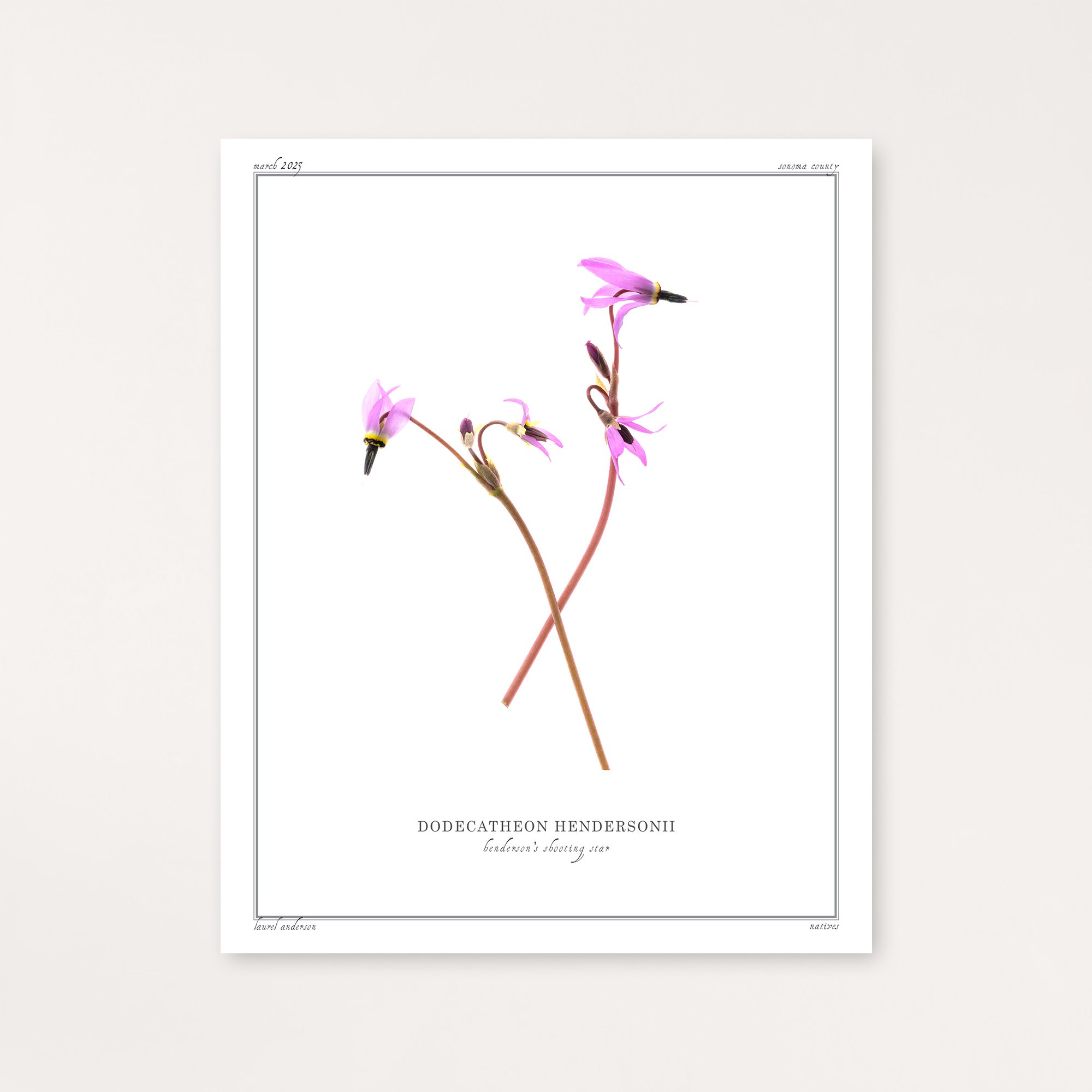 Image 1 of 2
Image 1 of 2

 Image 2 of 2
Image 2 of 2



Western Houndstongue II
Western Houndstongue, Adelinia grandis (formerly Cynoglossum grande), has large, tongue-shaped basal leaves that emerge in winter, followed by stalks of brilliant blue flowers with distinctive white centers. Its particular shade of blue is one of my favorite colors.
An important early-season nectar source for native bees and hummingbirds, it’s also the preferred host for the caterpillar of a pretty black and pale-spotted moth (Gnophaela latipennis).
Each print is made by the artist using archival quality pigment ink on Moab's Entrada Rag Bright 300 paper.
Western Houndstongue, Adelinia grandis (formerly Cynoglossum grande), has large, tongue-shaped basal leaves that emerge in winter, followed by stalks of brilliant blue flowers with distinctive white centers. Its particular shade of blue is one of my favorite colors.
An important early-season nectar source for native bees and hummingbirds, it’s also the preferred host for the caterpillar of a pretty black and pale-spotted moth (Gnophaela latipennis).
Each print is made by the artist using archival quality pigment ink on Moab's Entrada Rag Bright 300 paper.

